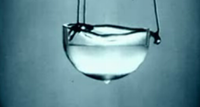
Efficient Surface Hopping Approach for Modeling Charge Transport in Organic Semiconductors.
Sign Up to like & getrecommendations! Published in 2022 at "Journal of chemical theory and computation"
DOI: 10.1021/acs.jctc.1c00944
Abstract: The trajectory surface hopping (TSH) method is nowadays widely applied to study the charge/exciton transport process in organic semiconductors (OSCs). In the present study, we systematically examine the performance of two approximations in the fewest… read more here.
Keywords: reorganization; surface hopping; energy; charge ... See more keywords

Nonadiabatic Dynamics in a Continuous Circularly Polarized Laser Field with Floquet Phase-Space Surface Hopping.
Sign Up to like & getrecommendations! Published in 2022 at "Journal of chemical theory and computation"
DOI: 10.1021/acs.jctc.2c00948
Abstract: Nonadiabatic chemical reactions involving continuous circularly polarized light (cw CPL) have not attracted as much attention as dynamics in unpolarized/linearly polarized light. However, including circularly (in contrast to linearly) polarized light allows one to effectively… read more here.
Keywords: floquet phase; phase space; surface hopping; nonadiabatic dynamics ... See more keywords

A Practical Approach to Wave Function Propagation, Hopping Probabilities, and Time Steps in Surface Hopping Calculations.
Sign Up to like & getrecommendations! Published in 2023 at "Journal of chemical theory and computation"
DOI: 10.1021/acs.jctc.3c00126
Abstract: We compare several established approaches for propagating wave functions and calculating hopping probabilities within the fewest switches surface hopping (FSSH) algorithm for difficult cases with many electronic states and many trivial crossings. If only a… read more here.
Keywords: time; surface hopping; time steps; hopping probabilities ... See more keywords

Polaron Pair Formation in Neat Conjugated Polymers: A Surface Hopping Study
Sign Up to like & getrecommendations! Published in 2020 at "Journal of Physical Chemistry C"
DOI: 10.1021/acs.jpcc.0c04962
Abstract: In order to elucidate the mechanism of polaron pair (PP) formation in neat conjugated polymers, we use Tully's fewest switches surface hopping (FSSH) method, which is based on the Pariser-Parr-Popl... read more here.
Keywords: polaron pair; conjugated polymers; formation neat; neat conjugated ... See more keywords

Surface hopping modeling of charge and energy transfer in active environments
Sign Up to like & getrecommendations! Published in 2023 at "Physical Chemistry Chemical Physics"
DOI: 10.1039/d3cp00247k
Abstract: An active environment is any atomic or molecular system changing a chromophore's nonadiabatic dynamics compared to the isolated molecule. The action of the environment on the chromophore occurs by changing the potential energy landscape and… read more here.
Keywords: charge energy; surface hopping; energy; charge ... See more keywords